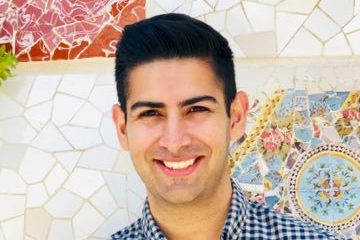Winc CMO on Complexities of Online Wine Sales
[ad_1]
The story of Winc displays the challenges of promoting alcohol on-line within the U.S. The corporate produces and sells wine through direct-to-consumer memberships and wholesale to bodily retailers. It launched in 2011 as Membership W, rebranded to Winc in 2016, adopted in-house-only merchandise, and went public in 2021. The inventory (NYSE: WBEV) sells at 32 cents per share.
Jai Dolwani is Winc’s chief advertising and marketing officer, accountable for DTC gross sales, ecommerce, and engineering and know-how — amongst different roles.
He and I just lately mentioned Winc’s journey and his function within the firm. Our whole audio dialog is embedded under. The transcript is edited for readability and size.
Eric Bandholz: Inform us about what you do.
Jai Dolwani: I’m a chief advertising and marketing officer at Winc, a wine-club membership firm. We promote direct-to-consumer and wholesale at Dealer Joe’s, Complete Meals Market, Goal, eating places, and bars. Now we have a couple of dozen in-house manufacturers on our web site, and we’re constructing a portfolio of wines targeted on the subsequent era of shoppers.
We promote solely our personal merchandise and have a crew of unbelievable winemakers. We launched in 2011 as Membership W. In 2016, earlier than I arrived, we re-branded to Winc. That’s after we shifted from promoting third-party wines to creating in-house merchandise and types.
We don’t personal vineyards or manufacturing services. We purchase grapes instantly from growers. Our wine-making crew is accountable for the end-to-end means of getting that right into a bottle.
Promoting alcohol on-line is a troublesome enterprise. Delivery it’s equally troublesome owing to the burden and fragility.
U.S. legal guidelines surrounding the sale of beverage alcohol date to the Twenties prohibition period. It’s a three-tier distribution system of complicated guidelines and laws.
For instance, some states have lifetime caps on the quantity of alcohol to ship into that area. We are able to now not ship there as soon as we’ve hit a selected lifetime worth — ever. For different states, it is determined by the place the wine was produced or bottled.
Plus, states have varied advertising and marketing laws. We are able to say “delivery included” and “zero-dollar delivery” however not “free delivery.”
Bandholz: You’ve got an progressive subscription mannequin.
Dolwani: Two years in the past, we transitioned to a credits-based system. We purchase subscriptions via a reduced first-time buy. After that, clients obtain 60 credit on their accounts each month. These credit roll over and by no means expire. Clients would not have to order each month.
We beforehand had the normal mannequin of receiving 4 wines each month or each quarter. However with computerized shipments, we had a number of supply complications as, by legislation, clients needed to be residence to signal for the cargo.
We switched to the credit score mannequin for that purpose and from buyer suggestions.
An added advantage of the brand new system is healthier engagement. Digital clients coming to the location, viewing our merchandise, and deciding on what they need supplies key information on what has the most effective likelihood of success in bodily wholesale channels.
Bandholz: What occurs if clients don’t use their credit?
Dolwani: We wish patrons to make use of 100% of their credit. In the event that they’re not utilizing the product, they won’t be a long-term buyer. We’re persistently emailing them if they’ve unused credit, saying, “You’ve got a number of credit. It is best to in all probability use them.” In the event that they’re unresponsive to emails, we’ll supply incentives and, additionally, use direct mail.
Nevertheless it’s a difficult stability. Reminding clients of unused credit can immediate them to cancel, as they aren’t utilizing the service. So it’s vital to speak in a means that’s merchandised and product-forward, not essentially highlighting giant reductions or the shortage of use.
Bandholz: Inform us extra about buyer acquisition.
Dolwani: Now we have a conventional, three-fold combine — Fb, Google, and associates. Our capability to scale on Fb via iOS 14.5 and elevated delivery prices was doable solely due to steady enhancements on advert creatives and looking out on the gross sales funnel holistically.
In June 2021, we overhauled all of our promoting to make use of creators and touchdown pages with higher ad-to-page relevancy. We retooled our whole acquisition funnel for the subsequent era.
Wanting on the whole funnel helps maintain Fb a giant a part of our combine. Google is regular. It doesn’t scale too far up or down.
Our affiliate community has been big for us. It accounts for , dependable portion of our buyer acquisition. Utilizing pay-per-post influencers was extremely profitable for us. However a lot of the engagement shifted from Instagram Tales to TikTok.
Bandholz: The place can listeners help you?
Dolwani: They’ll purchase our merchandise at Winc.com. My Twitter is @jaidolwani, and I’m on LinkedIn.
[ad_2]
Source link

